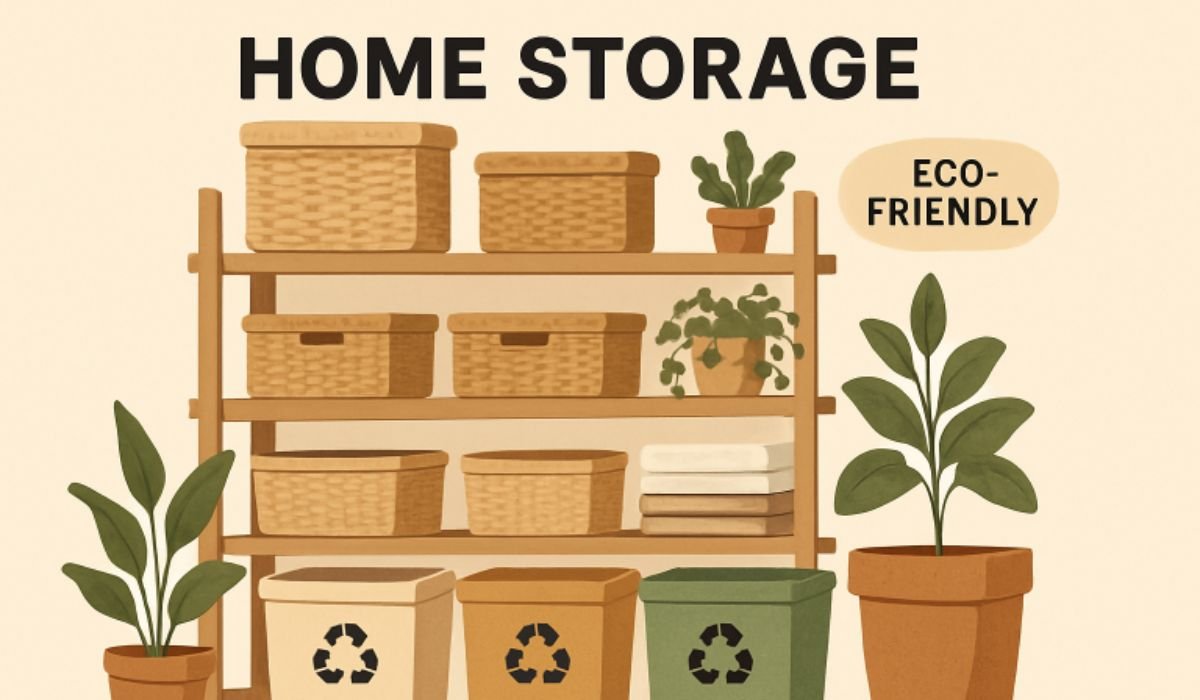Key Takeaways
- Choose renewable, sustainable, or recycled materials for your storage needs.
- Prioritize durability and quality to minimize long-term waste.
- Shop second-hand or upcycle items for storage to give materials a second life.
- Leverage energy-efficient practices in storage facilities and at home.
- Declutter regularly to promote a minimalist lifestyle and ensure efficient use of space.
Incorporating sustainability into everyday life extends beyond recycling and conserving water; it also encompasses adopting eco-friendly practices. Our approach to storing belongings—whether at home or in self-storage units—has a meaningful impact on the environment. Selecting eco storage can significantly reduce carbon footprints, foster healthier living environments, and set a positive example for future generations.
With thoughtful choices, anyone can minimize waste and adopt an organized approach without harming the environment. This guide offers practical advice and actionable steps to prioritize sustainability in your storage habits, helping you support the planet while simplifying your lifestyle.
Choose Sustainable Materials
Materials matter when it comes to eco-friendly storage. Instead of opting for new, non-recyclable plastics or chemically laden particleboard, select sturdy bins, shelving, or baskets made from bamboo, recycled plastics, or Forest Stewardship Council (FSC)-certified wood. These options are not just environmentally responsible—they’re also resilient and can be recycled or biodegrade at the end of their lifespans. Staying away from harmful finishes and glues ensures the materials are safe for both your home and the environment.
Opt for Quality and Durability
High-quality storage solutions are an investment in both your organization and the planet. Sturdy shelves, thick plastic bins made from recycled materials, or expertly crafted wooden chests will last for years—if not decades—reducing the need for frequent replacements. Choosing quality over quantity directly minimizes the flow of items into landfills and helps conserve resources used in manufacturing and transportation.
Consider Second-Hand and Upcycled Options
Not every storage need requires something brand new. Thrift stores, estate sales, and digital marketplaces offer a wide variety of shelving, baskets, and trunks ready to be repurposed. Repurposing old furniture or containers (like vintage suitcases as storage bins) not only saves money but breathes new life into materials destined for disposal. Crafting your own storage from reclaimed materials—such as crates or pallets—adds a creative flair and keeps resources circulating in the economy.
Implement Energy-Efficient Practices
If you require off-site storage, consider facilities that prioritize sustainability and environmental responsibility. Many now offer motion-sensor LED lighting, solar power, or recycling programs. These efforts significantly cut energy use and greenhouse gas emissions. Before signing a lease, ask about their green initiatives or look for recognized eco-certifications. Even small actions, such as selecting a facility near your home, can help reduce the environmental impact of your storage solution.
Declutter Before You Store
Less is more: Before packing for storage, evaluate each item thoughtfully. Remove things that no longer serve a purpose, and donate, sell, or recycle them. This not only keeps your space tidy but also helps others—and streamlines your storage needs so you don’t overpay or overuse resources. Regularly reassessing what you store means your storage spaces stay manageable and efficient.
Use Eco-Friendly Packing Materials
Traditional plastic packing tape, cling wrap, and single-use bubble wrap generate unnecessary waste. Instead, opt for packing paper, biodegradable packing peanuts, and bins designed for reuse. Cardboard boxes made from recycled content are sturdy and widely recyclable. For fragile items, old linens or clothing can offer protection without the need for plastic alternatives.
Organize Smartly for Efficiency
Efficient organization reduces clutter, saves time, and improves overall storage health. Stack boxes on sturdy shelving, label each container clearly, and maintain an updated electronic inventory list. Thoughtful organization ensures that you can locate items quickly, enabling fewer trips and less wasted time—all while keeping your green intentions.
Limit Your Visits to Save Resources
Every visit to a storage facility adds to your carbon footprint through fuel consumption and travel emissions. Reduce trips by grouping errands and visits, maintaining a detailed inventory, and storing only essential items. This not only saves energy but also advances a more mindful approach to storage use and personal organization.
Donate and Recycle Items
Donations and recycling help close the loop on resource use. Furniture, electronics, clothing, and books can be valuable to someone else, inspire upcycling projects, or be responsibly recycled at local facilities. Check community donation centers or recycling events for safe, convenient ways to pass along unwanted items. Donating keeps items out of landfills and strengthens community ties, and responsible recycling prevents environmental harm from improper disposal.
Be Mindful of Climate Control
Climate-controlled units protect delicate items from extreme temperatures and humidity—but they also consume energy. When necessary, select a facility with energy-efficient upgrades, such as high-performance HVAC systems and insulation. Only opt for climate control if storing valuables that require it, and pack items to maximize protection and limit the need for excessive controls.
Regularly Evaluate Your Storage Needs
As your life changes, so do your storage needs. Set a reminder to review your storage unit every few months: Remove anything unused or unneeded, and consider moving to a smaller space if possible. This reduces not only your financial costs but also your carbon footprint, ensuring your storage habits support your long-term sustainability goals.
Choosing green storage solutions requires mindful decisions across each step of the process—from material selection and organization to facility choices and ongoing decluttering. By adopting these practices, you build a lasting foundation for both sustainable living and efficient organization.
Conclusion
Adopting green storage solutions is a practical step toward building a more sustainable lifestyle. By choosing eco-friendly materials, maximizing space efficiency, and minimizing unnecessary waste, you not only create a more organized home but also contribute to environmental protection. Sustainable storage isn’t just about convenience—it’s about aligning everyday choices with long-term ecological responsibility. With mindful decisions, households can enjoy both functionality and the peace of knowing their storage practices support a healthier planet.
YOU MAY ALSO LIKE: Enginefirm.com: Your Blueprint for Advanced Mechanical Solutions

